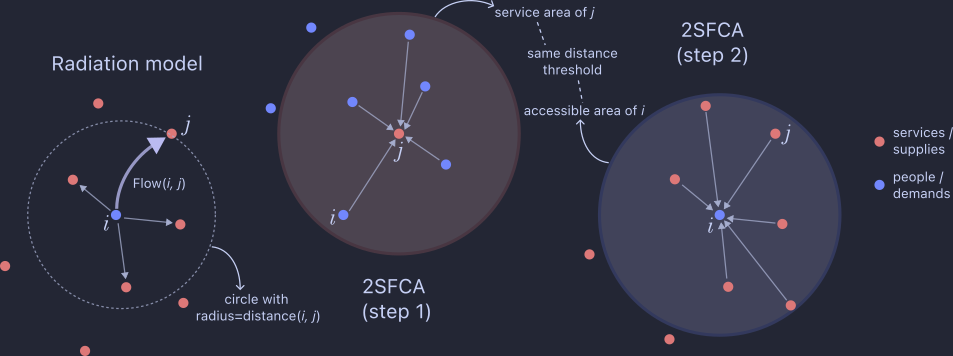Methodology
Two main concepts were used in this project: radiation model (Simini et al., 2012) and two-steps floating catchment area (2SFCA, Luo and Wang, 2003). The chart above provides a brief demonstration of the two concepts. The flow between \(i\) and \(j\) is calculated using: $${\langle T_{ij} \rangle = T_i \times \frac{m_i n_j}{(m_i+s_{ij})(m_i+n_j+s_{ij})}}.$$ The service-to-population is calculated using: $${R_j = \frac{N_j}{\sum_{k\in SA_j} P_k }}$$ and the accessibility is then calculated by using: $${A_i = \sum_{j \in S_i} R_j}.$$ The models were adapted based on our analysis setting.
The tools and team.